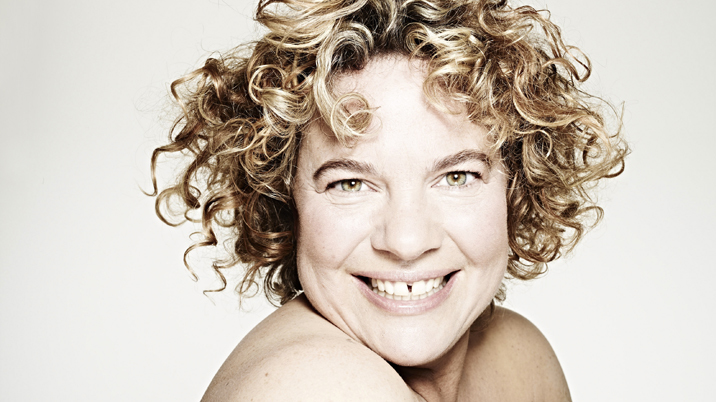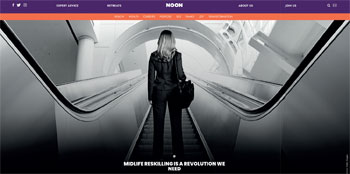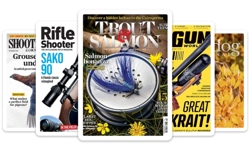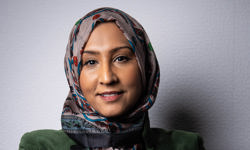
Eleanor Mills, former editorial director of The Sunday Times, is recalling how often male editors would ask her to “brighten up” a picture of a female star – newspeak for “put in one when they were younger”. She sighs. “They don't want to look at older women. They don't want to think about them.” No one is avoided on the pages of a publication as much as Middle-Aged Woman.
But what about Middle-Aged Reader? Women in midlife don’t want to be ignored. They want to be valued. And Mills, who also edited The Sunday Times Magazine, is doing something about it. This March, she set up Noon, a platform for women between 40 and 60, providing them with role models, advice and peer support. “Midlife is a real opportunity to do something new,” Mills explains in a video on the website. “Noon is a place where you can explore what that new version of you might look like.”
Male editors don't want to look at older women – they don't want to think about them.
The power of new
Mills came up with the idea for Noon when she was forced to do something new herself. In early 2020, she was made redundant from The Sunday Times, where she had worked for 22 years, having joined as its youngest ever features editor. “I felt like I’d been spat out. That was a real shock to the system.” Mills felt desolate. “I remember googling redundancy, and all that came up was the HMRC website and probably something from BuzzFeed saying five things to do if you’ve lost your job.”
A few months earlier, Mills had been on a retreat to help a friend through bereavement and had become interested in the possibilities of change in midlife. Mills had imagined running her own retreat business, but Covid had since got in the way. She now widened her vision. She would start a media company that would create content and run retreats, when she could.
It would be the sort of place Mills had wanted to find on that Google search. “I had wanted to know what transformation might look like and how I might do it. As an editor, you get a sense that if you're thinking about something, then other people are, too.”
We’re making a real point of saying: women in midlife deserve joy. Just because you’re older doesn't mean you shouldn’t be having a great time.
Making it happen
Her journalism skills would come in useful: while her editor’s instinct led Mills to believe there was a market, her reporter’s perseverance in cold calling and following leads set everything in motion. Mills was in her element.
Contacts seem to have been waiting for this opportunity. Noon’s advisory board includes Eve Pollard (former editor of the Sunday Mirror and the Sunday Express), Baroness Helena Morrisey (founder of the 30% Club) and Helen Ward (a top divorce lawyer). The “business brain” behind Noon is co-founder Claire Gillis, who has built several companies, selling her last one to WPP. “It's really fun being two female founders,” says Mills. “We both have strong views about the culture we want to create.”
Every morning, the editorial staff, led by Tiffanie Darke (former editor-in-chief at A&E Networks and Sunday Times Style editor) and Jennifer Howze (former online lifestyle editor at The Times), meet over Zoom. The plan is to stay remote, with Zoom meetings being key. “I’ve always thought that the most fun thing about newspapers was the banter,” says Mills. “It was the standing around, bunging in a headline, someone saying something crazy and that sparking off a thought.” A Noon Zoom meeting involves “all sorts of Noon chat” from hot flushes to midlife crushes. “I think some of the millennials are slightly horrified,” admits Mills, “but most of the team are in their Noon prime and are really walking the walk”.
They’re the kinds of stories that if you pitched them to a mainstream publication, they'd be like, ‘Oh, God, no, I don't think so’.
Sex clubs… and other stories
Stories slot into different pillars (health, wealth, careers, purpose, sex, family, joy and transformation) and are commissioned keeping in mind a US study that found that wellbeing sinks to a nadir at 47, before rising again. Women in midlife might be facing redundancy, adjusting to an empty nest or looking after elderly parents. “One of the most helpful things somebody said to me when I left The Sunday Times was that change is difficult, but it will get better. That’s the Noon message. We want to say, ‘We know it’s hard at the moment. Here’s some expert advice. And these are the sunny uplands you can get to.’”
For many, midlife means the menopause – and this, at least, seems to be having its mainstream media moment. Davina McCall’s Channel 4 documentary, Sex, Myth and the Menopause aired in the spring, while Mariella Frostrup’s book, Cracking the Menopause is out in September. Generation X [people born between 1965 and 1980] are coming of age. “As Gen X, we've always lived lives on our own terms,” says Mills. “We've changed the way society thinks about sexuality, gender and race. Now we don’t want the kind of menopause our mothers had.”
For Mills, who was chair of Women in Journalism until earlier this year, the menopause is “absolutely part of midlife”, but it’s not everything. “It’s important because it shows the lack of research into female biology,” she says, “but there’s a whole range of issues women care about that are ignored in the mainstream press”.
The whole narrative needs to change. “We’re making a real point of saying: women in midlife deserve joy,” says Mills. “Just because you’re older doesn't mean you shouldn’t be having a great time.” Joy does not just mean hormonal health; it applies to all areas of life.

Gen X women are the first to have worked during much of their lives, notes Mills, with half being breadwinners in their family. In midlife, they might want to change career. In one piece on the site, for example, a diplomat has written about retraining as a doctor. Women at this age might also feel more confident, like the woman writing about becoming a lingerie and curve model. Or they might want to refresh their sex lives: an article by a woman who went to a sex club after her divorce has done particularly well. “They’re the kinds of stories that if you pitched them to a mainstream publication, they'd be like, ‘Oh, God, no, I don't think so’.”
Magazines like She, Marie Claire and Easy Living may well have once covered similar material, but the diversity of stories has suffered with the demise of the magazine market. It’s hard for print survivors to take risks with content because sales figures take months to arrive, by which time publishers have bottled out. Newspapers have tried it, but tend to hide caricatures of woman in midlife between articles about “Flossie, 18, who is going to a party”.
Noon issues flourish instead on “dark social” – they’re the sorts of exchanges women have on a WhatsApp group after a few glasses of wine or in direct messages on Instagram. “They're not taken into the light because a lot of women feel ashamed and vulnerable, like they will be judged and misunderstood.” Noon can be nuanced because content is aimed purely at that age group. No one is judging here.
We're not trying to compete with anyone. We're trying to raise the profile of these issues across the board.
Life in the fast lane
Unlike print, feedback on digital stories is instant. Noon went live on March 8, 2021, and now has an audience of 10,000, who return almost daily and stay for about three minutes. According to Noon, around 250,000 people have visited the site.
Social media is doing equally well, with the Noon accounts gathering nearly two million impressions. Its Instagram following numbers just over 5,000 and is growing. Noon has avoided paid social to test engagement. This, says Mills, is more important than clicks. She wants to retain the serendipity of newspapers, of not knowing you were interested in something until you started to read about it. If an audience trusts a brand, they will allow curators to guide them to stories.
New media, says Mills, is more collaborative than traditional publishing. “People on different sites and behind different Instagram feeds are really supportive. We’re appearing on each other's podcasts and swapping audiences. It’s a very different publishing model from print. We're not trying to compete with anyone. We're trying to raise the profile of these issues across the board.”
A third of Noon’s traffic comes from the US, where there is a strong ‘age positive’ movement. Forbes has just launched its 50 over 50 list, while groups like SecondAct, a network for woman in corporate jobs looking to start a business, are gathering a following. “I think they’re further along than we are,” says Mills, “but there isn't a big lifestyle channel over there – and that’s what Noon could become. I want Noon to be the place for women in midlife, so you think, ‘That's very Noon’ and people talk about their ‘Noon time’ as an age of opportunity.”
I want Noon to be the place for women in midlife, so you think, ‘That's very Noon’ and people talk about their ‘Noon time’ as an age of opportunity.
Commercial value
The more immediate ambition is to make Noon profitable. The idea is to weave content with events, courses and the retreats Mills originally envisaged. In June, Noon led an event on Facebook Live with Sheryl Sandberg, COO of Facebook and founder of LeanIn.Org, and launched an online book club, led by Sam Baker, former editor of Cosmopolitan and co-founder of The Pool. The first ‘reboot’ retreat will take place in September, in the Yorkshire Dales.
Mills is also looking into Clubhouse-style technology for a membership area, allowing women to speak to each other. “I really want to do that because a lot of women are lonely.”
Finally, Mills wants to build partnerships with brands, encouraging them to realise the value of a generation. “I've just turned 50 and the only thing anyone tries to sell me is incontinence pads or, if I'm lucky, wrinkle cream. There’s a massive mismatch between how Gen X are portrayed and the reality of our lives.” Mills is having her Noon time. Now she wants women in midlife to join her.
This article was first published in InPublishing magazine. If you would like to be added to the free mailing list, please register here.










